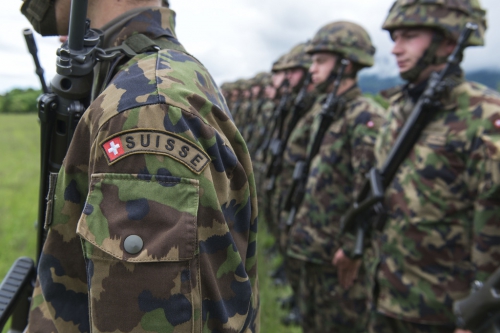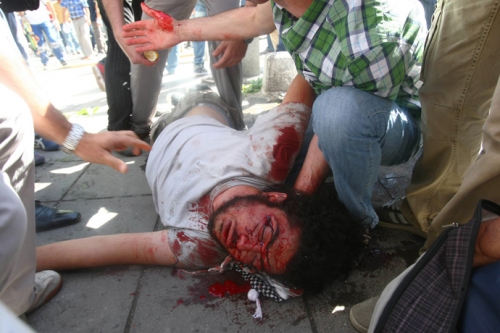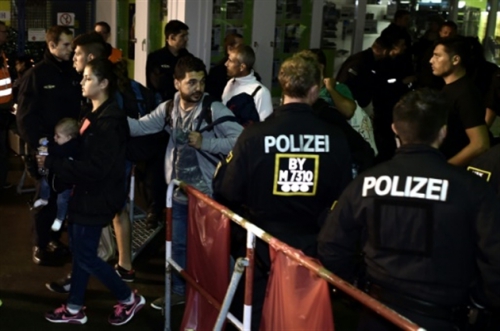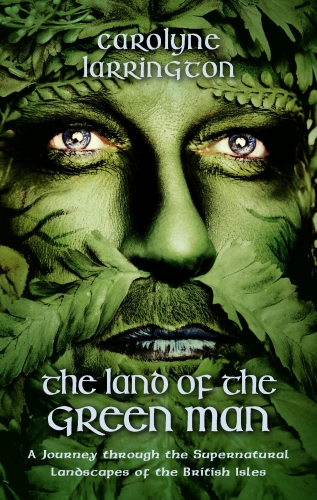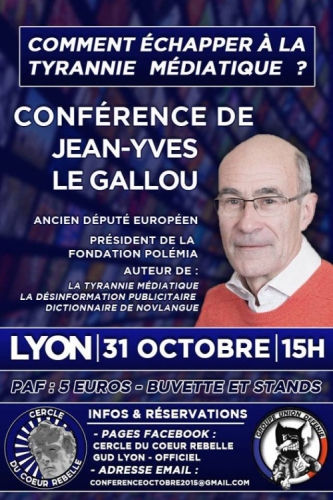By Joachim Hagopian
Ex: http://www.lewrockwell.com
The idiom “divide and conquer” is said to have originated with the Latin maxim “divide et impera” meaning divide and rule. Julius Caesar used it in reference to defeating the Gauls during the Gaelic War. While its first usage in the English language began circa 1600, through the centuries it’s carried a commonly understood meaning. The retention of power by utilizing a deliberate strategy of causing those in subordinate positions to engage in conflicts with each other that weaken and keep them from any unified effort to remove the status quo force from power. This policy of maintaining control over subordinates or potential opponents by encouraging or causing dissent between them, thereby preventing them from uniting in opposition to pose any serious threat to the existing power structure is a very familiar story throughout history. It’s an age old formula having multiple applications, most commonly used in the political arena but also in the military, sociological and economic realm as well.
Machiavelli formulated the divide and conquer strategy as an axiom in his Art of War where the enemy can be forced to break up their forces or where the mutual trust between the opponent’s leader and his men can be sabotaged and broken. Economically in the corporate world it’s used to gain advantage by triggering smaller competitors to take business away from each other and in effect canceling each other out, leaving the larger corporation to move in to reap greater profits, an indirect way the bigger fish eat the littler fish. Business models also use it to successfully tackle a large project by breaking it down into smaller, more manageable components. Sociological application of the divide and conquer strategy involves causing discord and conflict amongst racial/ethnic groups, or exploiting class, religious, age or gender differences to divide and diminish power of various groups according to these sociological classifications.
History is ripe with examples of its successful implementation. One illustration of its sociological application was during the 17th century when the Virginia elite quelled a rash of uprisings from ex-indentured servant white men unified with black slaves by enacting race laws that elevated the rabble status of poor whites so far above the slaves that it effectively eliminated the threat of their ever joining forces in armed rebellion again. This divide and conquer stratagem was frequently repeated by European colonial powers typically pitting competitive tribal, ethnic and religious factions against each other to ensure they would not conspire revolt against the ruling imperialists. In Asia the British took full advantage of Moslems versus Hindus in India as well as creating conflict between Indians and Pakistanis. In the African colonies of Rwanda and Burundi Germany and Belgium created conflict between the Tutsis and Hutus that’s continued right into the genocidal 1990’s. For centuries the Rothschilds made it a family tradition funding both sides in a long series of wars in Europe and America guaranteeing them as the sole benefactors of waging war over the long haul.
This constant thematic thread of divide and conquer permeates the twentieth century on an epic, never before seen scale. The globalist-internationalists intentionally instigated both World War I and II as well as every major rise and fall of the stock market. The German militarization that led directly to WWI, the Bolshevik Revolution that violently evolved into both the Soviet and eventual Chinese Communist regimes along with Hitler’s rise to power (compliments of the likes of globalist George H.W. Bush’s father Prescott) were all examples of how the ruling elite directly funds and willfully creates conflict amongst competing powers, thereby covertly consolidating and expanding their own power base. Their heinous crimes against humanity for their own selfish gain resulted in the two most destructive, bloodiest conflicts in human history. And as such, the global elite also played a sinister yet crucial role financing the three most murderous dictators in human history – Mao Tse-tung, Josef Stalin and Adolph Hitler. And with all that blood on their hands, their thirst for more blood soaked power and control only continues with their call for both hard and soft kill methods to cull the human population from its present 7.3 billion people down to just half a billion.
As an outgrowth of World War II, the globalists devised the diabolical scheme of carving up the world by political ideology, promoting a relatively permanent, ready-made solution. The so called free world’s chief nemesis would be the Communist enemy. Thus, the despot Josef Stalin was intentionally allowed to seize vast amounts of the European continent. And so Eastern Europe as the Communist Iron Curtain was deliberately sacrificed as the West’s concession to Soviet Empire expansion and the convenience of a readymade enemy and the Cold War was born.
Fervent anti-Communist and noted New York-Hollywood writer, director and producer Cecil Fagan in the late 1960’s recorded The Illuminati and the Council on Foreign Relations:
The idea was that those who direct the overall conspiracy could use the differences in those two so-called ideologies [marxism/fascism/socialism/communism v. democracy/capitalism] to enable them [the Illuminati] to divide larger and larger portions of the human race into opposing camps so that they could be armed and then brainwashed into fighting and destroying each other.
Using these same divide and conquer tactics elsewhere in Asia, at the end of WWII the globalists using longtime Council on Foreign Relations (CFR) member and future Secretary of State Dean Rusk [1961-1969] to arbitrarily split Korea at the 38th parallel (a nation and people that for centuries had always been unified) into two separate enemy camps. South Korea remained under US control complete with an installed bloodthirsty dictator puppet while very similar to a cockfight the Soviets were grooming their Communist tyrant to the North. The ensuing cold war set the stage for yet more violence with each side vying to wage war to win back reunification from the other. Instead, the three year conflict dragged on finally grinding to a bloody stalemated halt after killing over a million Koreans along with plenty of dead Chinese (well over 100,000 Chinese estimate to 400,000 US estimate) fighting with Communist North Korea and about 36,000 dead Americans fighting as a UN coalition force alongside South Korea.The internationalists discreetly gave away American technology and large sums of cash to the Russians while Senator Joe McCarthy domestically led his Red Scare inquisition. To ensure this Communist scare really got off the ground guaranteeing the rise of the military industrial complex and more unstoppable war, the Rockefellers and their fellow Western globalists also saw fit to secretly finance and back Mao’s power grab taking control over China’s mainland, conveniently splitting the Chinese people into Red Communists while covertly undermining yet publicly supporting Chiang Kai-shek’s island retreat to Formosa (later Taiwan).
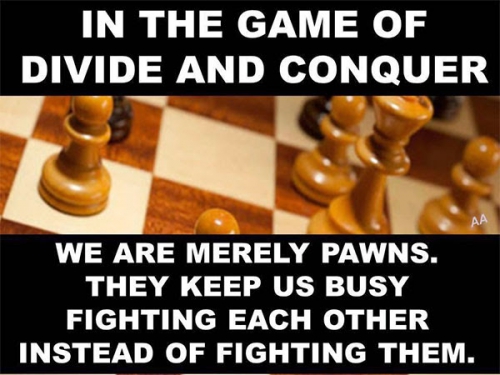
And to this day the US maintains a strong military presence in South Korea despite sentiments voiced last year by South Korea indicating it desires reunification. But in this polarized geopolitical world compliments of the globalists’ re-installment of Cold War 2, NWO puppet Obama’s been busily militarizing East Asia in his feebly aggressive “pivotal” push toward military confrontation with the East. As a result, tensions are heating up with Beijing asserting its emerging leadership role in the region taken by the Washington neocons as a direct threat and challenge to Empire’s global hegemony.
Within a decade after the Korean War was over, the globalists were at it again replicating this same proven lethal formula fueling another cold war wedge in Asia, this time with the divided Vietnamese population. Again with the Communists in the North and another corrupt US supported puppet in the South, once the globalists got rid of Kennedy who’d vowed to return all US military advisors and thereby avoid war in Vietnam entirely, less than a year after JFK’s murder, co-conspirator Lyndon Johnson plunged the imperialistic Empire into its longest running war in US history under the pretense of yet another false flag lie in the Gulf of Tonkin in August 1964. Nine years later, three more million Southeast Asians lay dead along with 58,000 more Americans. But this time America suffered its first humiliating military defeat in its exhaustive warring history (at war 93% of the time).
But military defeat nor heavy loss of human life would ever phase psychopathic globalist-bankers always out to make their greedy killing feeding their imperialistic greed and Empire’s hegemonic control. After all, war profiteering in Asia had become an American pastime and big business for the globalists. At the turn of the twentieth century as the first Asian bloodbath ended, the Spanish American War witnessed the US military brutally slaughtering close to a million Filipinos (per Filipino historians). This level of violence was meant to send the chilling message to the Third World that nothing would stop US imperialism from having its way with lesser powered nations. By the way, the internationalist robber barons were behind the false flag excuse to start that war too. Media mogul Randolph Hearst knew yellow journalism – “Remember the Maine?” Fact: each and every war in the bloodiest century known to man was initiated by yet another premeditated globalist false flag event.
Unsurprisingly, pro-New World Order globalists’ true but largely hidden ideology has always leaned far closer to their supposed Communist totalitarian enemy than any real democracy. They’ve always been about killing off all competition for the sake of maintaining monopolized control of an anything but free market. They’ve used their secret fraternity to retain their global power into the fewest hands. And their lust for Third World exploitation, theft and violence is so insatiable that any foreign national leader who actually attempts to practice democratic principles directly benefiting and uplifting their native population is simply not tolerated and through the globalists’ secret private army the CIA that answers to no one in government, that leader is quickly assassinated and/or overthrown. Iran’s Prime Minister Mohammed Mossadegh in 1953 and Chile’s President Salvador Allende in 1973 are but two among many examples of international leaders who were violently cut short from continuing their noble work improving the economic lives of their people. Because they were loyal to their own citizens and nations and United States business interests were not given high enough priority, the CIA made sure they were eliminated from power.
Again straight out of organized crime’s playbook, the message to all nations on earth is either you play ball allowing the mighty US bully to come rape and pillage your country or your leader will suddenly be gone in a heartbeat. With near total impunity for more than 60 years the CIA’s been covertly deployed around the world engaging in state sponsored terrorism as the globalists’ mercenary death squad constantly violating every international law, UN Charter and Geneva Convention rule in order to subversively wreak havoc around the globe, again protected with complete impunity by US’ deep state exceptionalism.
Indeed there are very few regions on earth where US Empire has not actively supported or organized coup d’états or otherwise overthrown and/or assassinated foreign leaders and governments. One readily can see that the alphabetical shortlist that follows is actually very long:
Afghanistan, Albania, Angola, Argentina, Bolivia, Bosnia, Brazil, Cambodia, Chile, China, Colombia, Colorado, Congo, Cuba, Dominican Republic, Egypt, El Salvador, Germany, Greece, Grenada, Guam, Guatemala, Haiti, Hawaii, Honduras, Indonesia, Iran, Iraq, Korea, Kuwait, Laos, Lebanon, Liberia, Libya, Macedonia, Mexico, Nicaragua, Oman, Pakistan, Panama, Philippines, Puerto Rico, Russia, Samoa, Saudi Arabia, Somalia, South Dakota, Sudan, Syria, Turkey, Uruguay, USSR, Ukraine, Venezuela, Vietnam, Virgin Islands, Yemen, Yugoslavia and Zaire
And the list above doesn’t even include assassinations committed by government insiders inside the US of such prominent American leaders as JFK, Malcolm X, Martin Luther King and RFK. With thousands of murderous hitmen posing as federal agents undoubtedly never serving even one day in prison for committing so much murder, mayhem and chaos over so many years on such a colossal global scale, it’s mind boggling to even fathom how their sins go unpunished. Speaking of getting away with murder, despite the CIA getting caught red-handed committing unlawful acts of torture (euphemistically called enhanced interrogation techniques) on a regular basis during the Bush-Cheney years, Obama refused to prosecute because he more than likely allowed it to continue on his watch. So says the imprisoned CIA officer turned whistleblower John Kiriakou who ended up doing serious time because he did the right thing courageously exposing the widespread inhumane practice while the perpetrators got away with their crimes. But then consistent with history, good deeds go punished and evil ones don’t.
Despite each US president paying lip service to both domestic and international law explicitly prohibiting political assassination, the exceptional Empire-crime syndicate’s track record proves that through the CIA the US government regularly engages in tampering with other nation’s sovereignty to the extent that coups de tats, murders, at least 50 attempted murders and 600 assassination plots of foreign leaders in the last 50 years are commonplace. The divide and conquer strategy is easily met by separating another sovereign nation from its deposed leader, thus conquering and subjugating both the people and the next US installed handpicked puppet. The two examples Shah of Iran and General Pinochet as selected past US puppets were both infamous tyrants and war criminals guilty of viciously killing thousands of their own people. But since birds of the same criminal ilk flock together, they gave the predatory US vultures everything they wanted and demanded.
While war criminal-globalist with the rock star status Henry Kissinger was being selected as Nobel Peace Prize winner, similar to Obama years later, Kissinger was busily orchestrating Allende’s death on Chile’s own 9/11. Bottom line reality, globalist-led US Empire neither encourages nor permits independence and prosperity to reign in any nation, especially ones endowed with a wealth of natural resources that must be milked, mined and stolen by the elite.
Active membership in the globalist dominated Council on Foreign Relations or any number of other globalist organizations like the Bilderbergers, Trilateral Commission, Yale’s Skull and Bones Society automatically places you at the head of the class as a prime mover and shaker of world events and developments. Since 1921 CFR globalists have remained a permanent, very visible fixture in Washington operating at the power pyramid pinnacle within all branches of the federal government, over-stacked especially in the executive and legislative branches. Over the last century most US presidents and nearly all heads of their State, Defense, Treasury and Justice Departments as well as the key Congressional powerbrokers have all been CFR plants pushing relentlessly toward their New World Order.
Famed American historian, John Kennedy’s award winning biographer, confidant and globalist Arthur Schlesinger Jr. in 1995 remarked in the CFR publication Foreign Affairs, “We are not going to achieve a New World Order without paying for it in blood as well as words and money.”
With a bloody full century behind them of blatant dividing, conquering and destroying other peoples and nations at will, at the start of this century the geopolitical stage was already set for globalists to step up their despicable low-bar standards by sinking even lower, committing unprecedented, unthinkable acts of evil. Since 9/11 they’ve been turning to their tried and true divide and conquer methodology at an accelerated clip paving the way to their endgame scenario – a New World Order complete with a one world government and a cashless, micro-chipped feudalistic society. At this late stage in their game, 2015 so far has been the year they’re smelling blood and closing in for the kill.
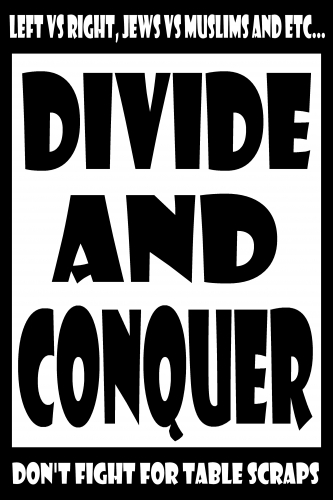 For many years the US Empire has been employed to do the global elite’s dirty bidding. After using Osama bin Laden’s al Qaeda originally to defeat an overextended Soviet Empire in the world’s empire graveyard Afghanistan throughout the 1980’s, forcing the breakup of the Soviet Union nearly a quarter century ago, the US Empire then used its clout as the world’s only superpower to ensure that Russia and China would never challenge US hegemony and full spectrum dominance again. The globalists proceeded on an ambitious worldwide quest to increase dominance and control by embarking on an agenda to destabilize the entire world. Though the US has focused its most destructive power on the Middle East and North Africa, the sheer madness of destabilization has spread deeper into the sub-Saharan African continent as well.
For many years the US Empire has been employed to do the global elite’s dirty bidding. After using Osama bin Laden’s al Qaeda originally to defeat an overextended Soviet Empire in the world’s empire graveyard Afghanistan throughout the 1980’s, forcing the breakup of the Soviet Union nearly a quarter century ago, the US Empire then used its clout as the world’s only superpower to ensure that Russia and China would never challenge US hegemony and full spectrum dominance again. The globalists proceeded on an ambitious worldwide quest to increase dominance and control by embarking on an agenda to destabilize the entire world. Though the US has focused its most destructive power on the Middle East and North Africa, the sheer madness of destabilization has spread deeper into the sub-Saharan African continent as well.
Their favorite method of achieving this objective involves employing their divide and conquer strategy that’s embodied in the imperialistic operational term “balkanizing.” It most accurately describes the Modus Operandi by which the elite’s quest to global destabilization has been accomplished. But as Pebe Escobar aptly says, ”Empire of Chaos isn’t working out too well for them.” For all its destructive power to destroy other nations, the US appears to also be self-imploding. Of course that’s what empires do, just like the sun, they rise and they fall, and currently the sun’s fast setting on the American Empire.
This presentation aims to address the cold hard reality that it’s clearly no accident but purely by globalist design that as the US powers-that-be so zealously and willfully export their most dubious, most skilled commodity – bombing other nations around the world into oblivion – the global elite also desires to simultaneously bring down America as the most powerful country on earth. The modern roots to this tragic tale with such a seemingly sad ending for so many is conspicuously embedded in plain sight in the not so distant past.
Fresh off the cold war with the Soviet breakup, in the 1990’s globalist Bill Clinton used NATO’s dirty bombs to soften the resistance for Osama’s US mercenary band of al Qaeda terrorists that had been hired to move Afghan heroin from the Balkans into the West while killing demonized Serbs in Bosnia and Kosovo. The end result was the systematic destruction of the former Yugoslavia, balkanizing the country by breaking it up into a half dozen separate ineffectual pieces as failed nation-state puppets for US transnationals to divvy up their predatory claims with first dibs reserved for US military expansion. Thus, the US quickly installed yet more killer machine airfields and military bases (near a thousand dot the Empire occupied planet) as part of a strategy to seal off Russia’s borderland nations, quickly turning them into anti-Russian, pro-NATO vassal enclaves. Next came the proliferation of installing warhead missiles aimed directly at Moscow from such close doorstep vantage points as Poland and Romania with the strategic goal of stretching them into Central Asia. As suicidal insanity, currently the neocons are both prepping and pressing US-NATO for a preemptive nuke strike against Russia.
The location hub of Eastern Europe in Russia’s backyard has always served empires well for nearby military incursions into the Middle East and Central Asia. US military bases in Croatia, Romania and Bulgaria along with the strategic Eurasian gateway ally Turkey offered the necessary precursor launching pad for the neocons’ Project for the New American Century’s (PNAC) post-9/11 US invasion-occupation-destabilization-regime change-failed state endgame war agenda scenario across the Middle East and North Africa.
The major players in the international crime cabal government occupying Washington when not at their home away from home Tel Aviv, that infamous neocon Bush-Cheney gang holding so many dual US-Israeli citizenships as both the 9/11 and war-on-terror architects (in cahoots of course with Israeli Mossad and the Saudi royals) are clearly responsible for carrying out the bloodiest, most ambitious and diabolical false flag in history on 9/11. Their Project for the New American Century from a couple years earlier prior to 9/11 was the blueprinted plot laying bare their new century’s aggressive foreign policy-on-steroids. Under the false pretext of their war on terror, they’ve engaged in multiple regime changes (their plan called for seven in five years per General Wesley Clark) after executing their “new Pearl Harbor event,” they’ve consistently employed their divide and conquer strategy to destabilize, weaken and destroy targeted Muslim nations throughout the Middle East and North Africa. And those very same treasonous Washington neocons holding dual US-Israeli citizenship who pulled off the 9/11 coup are incredibly still driver-seated in power still plundering the globe today. But make no mistake, all along they’ve been receiving their marching orders directly from the globalists in charge, representing the 1% wealthiest people on earth that own more than the rest of us 7 plus billion combined!
 The growing list of US victimized nations-turned-war-ravaged failed states include Iraq, Afghanistan, Somalia, Libya, Syria, Yemen, Sudan, Central African Republic, Congo, Ukraine and a few others we likely still don’t know. By using oil rich, corrupt Muslim monarchy Gulf states as their co-conspiring vassals – namely Saudi Arabia, Qatar, United Arab Emirates, Kuwait and Jordan along with Turkey, together creating the scourge of well-funded, well-trained, well-armed and well-supplied proxy mercenary terrorists ISIS, the US-Israeli-NATO alliance controlled by the globalists have – again by design – pitted Muslim nation against Muslim nation, Shiites against Sunnis, Western white Christians against Muslims worldwide. And that’s not even counting the thousands of Muslim family members who’ve lost relatives due to US war and drone strike transgressions over the last decade and a half that’s acting as an ideal recruiting station for Islamic extremism. Undoubtedly many vowing to avenge the death of their loved ones are now fighting against the US as ISIS jihadists. But then that feeds right into the globalist strategy to keep fresh angry recruits fighting their manufactured war of terror.
The growing list of US victimized nations-turned-war-ravaged failed states include Iraq, Afghanistan, Somalia, Libya, Syria, Yemen, Sudan, Central African Republic, Congo, Ukraine and a few others we likely still don’t know. By using oil rich, corrupt Muslim monarchy Gulf states as their co-conspiring vassals – namely Saudi Arabia, Qatar, United Arab Emirates, Kuwait and Jordan along with Turkey, together creating the scourge of well-funded, well-trained, well-armed and well-supplied proxy mercenary terrorists ISIS, the US-Israeli-NATO alliance controlled by the globalists have – again by design – pitted Muslim nation against Muslim nation, Shiites against Sunnis, Western white Christians against Muslims worldwide. And that’s not even counting the thousands of Muslim family members who’ve lost relatives due to US war and drone strike transgressions over the last decade and a half that’s acting as an ideal recruiting station for Islamic extremism. Undoubtedly many vowing to avenge the death of their loved ones are now fighting against the US as ISIS jihadists. But then that feeds right into the globalist strategy to keep fresh angry recruits fighting their manufactured war of terror.
As if this tragic mess created in the Middle East and North Africa isn’t enough for the bloodthirsty globalists, in 2014 enter Hillary and Soros’ NGO-led coup in Ukraine and the globalists with one illicit stroke reignited Cold War 2 that currently has the Western world on the brink of triggering a possible nuclear war against the powerful Eastern alliance of Russia-China-Iran. By their shameless demonic design, the globalists’ deceitfully delivered war of terror with its $6 trillion price tag and counting has bankrupted the globalist-created Ponzi scheme of a house of cards economy, made our only planet the most armed and dangerous in recorded history, and is now rapidly pushing humans toward yet another world war and/or human-induced mass extinction that might well spell the end of all life on earth. With the stakes never higher, the lethal culmination of their divide and conquer strategy being fulfilled through this century’s escalating events and developments are unfolding upon us now at breakneck speed.
At the behest of Israel, the US seized the opportunity for more dividing and conquering by “balkanizing” the entire MENA region into weakened failed states for superpower’s global hegemony and further blood-for-oil plundering. Subsequently Iraq has been partitioned off by ethnic-sectarian divide reserved for more manageably designated Sunni, Shiite and Kurd states. Of course the destabilizing presence of ISIS invading Iraq in June 2014 seizing an undefended Mosul conveniently allowed the US excuse to reinstall its military posts back in Iraq, something the then quickly deposed Maliki had obstinately refused when US military departed Iraq in December 2011. But two weeks ago this Middle East quagmire by globalist design compliments of US Empire of Chaos just got jolted by Putin’s game-changing wakeup call at the UN.
Until Putin’s recent no nonsense interventions to start snuffing out ISIS in Syria where Obama for over a year was playing his pretend game to “hunt them down,” the determined US agenda for over four years had been to regime change Assad, destabilize and balkanize Syria a small nation into weaker factions so the oil-gas pipeline war against Russia could be won on the way to claiming the final grand prize in the region – taking down Iran as Israel’s and hence Empire’s foremost thorn in its side. Just months before the US-P5-Iran nuke agreement, the CFR’s Foreign Policy was still frothing at the mouth calling for an Iran regime change.
The same globalist/US design to destabilize through balkanization is either in process or been deployed in Libya, Yemen, Ukraine, Pakistan, Congo, Sudan, the South Caucasus,Myanmar, Thailand and other places where Black Ops go that we don’t know. But regardless of where, we do know America’s destabilizing agenda has everything to do with its transparently futile attempt to cut off, isolate and weaken renewed cold war adversaries Russia and China as well as nemesis Iran. With US Special Operations Forces secretly deployed in 135 nations around the world, terrorism-r-us comes in the form of a destabilizing meat cleaver gone global. After all, the US Empire of Chaos is carving up yet more of the geopolitics chessboard using divide and conquer tactics straight out of its favorite Machiavellian playbook “the art of war.”
 Another alarming consequence of this NWO agenda that’s never been more glaringly obvious is the out of control refugee migration crisis presently spreading throughout Europe. Unfortunately by globalist design the failed foreign policy of Western governments spearheaded by the United States Empire has also led directly to this manufactured human crisis. The neocon plan to destroy the Middle East and North Africa through prolonged military occupation, continued air strike bombing and forever war spilling blood into its second decade along with the fabrication of the fake enemy ISIS has singlehandedly created the migration crisis in Europe.
Another alarming consequence of this NWO agenda that’s never been more glaringly obvious is the out of control refugee migration crisis presently spreading throughout Europe. Unfortunately by globalist design the failed foreign policy of Western governments spearheaded by the United States Empire has also led directly to this manufactured human crisis. The neocon plan to destroy the Middle East and North Africa through prolonged military occupation, continued air strike bombing and forever war spilling blood into its second decade along with the fabrication of the fake enemy ISIS has singlehandedly created the migration crisis in Europe.
But with Obama’s open door policy operating for nearly seven years now along the southern US-Mexican boundary line, last summer’s 50,000 kids from Central America converging at the border fueled the immigration crisis that was capturing all the headlines in America. A similar policy in the Western Hemisphere concocted a long fake war on drugs that’s been maintained by an illicitly covert US-Latin American crime cabal. Washington has been in partnership with the Latin American drug cartels, their criminal gangs and their national governments when not staging coups. Recall the numerous failed attempts in Venezuela and the one Obama and Hillary pulled off in 2009 when they overthrew another democratically elected leader in Honduras. Obama is simply following orders from the globalists to carry out a border policy that’s allowing millions of illegal aliens to enter the United States. The refugee migration crisis in both America and Europe is part of the globalist divide and conquer agenda, specifically designed to create racial tensions and conflicts between the native populations and the new arrivals. It also conveniently provides the perfect cover for yet more false flag terrorism in both the US and Europe.
Too many ignorant distressed Americans and Europeans latch onto the old blame the victim game, increasingly resenting and scapegoating darker-skinned outsiders as the mistaken cause of all their perceived problems such as lack of jobs they insist illegals are stealing and paying high taxes to support a welfare state the illegals are allege to be abusing. Obviously this globalist mixing of races and religions is causing mutual distrust, enflaming racial discrimination and open hostilities triggering massive protests and an alarming rise of racially motivated hate crimes across both North America and Europe.
A sizeable portion of the largely white Westerner holds the foreign migrant population in total contempt for forever literally changing the complexion and national and cultural identity of their homeland. Europeans are justified in their complaints citing wealthy Middle Eastern nations like Israel, Saudi Arabia and other oil rich Gulf states that have largely caused the crisis are adamantly refusing to take in any refugees. To take some of the political heat off, the Saudis just pledged Jordan that’s overrun with Syrian refugees $10 billion. As dire conditions unfold, many Europeans’ concerns are legitimate but as the crisis grows, so are people’s intolerance and anger. Yet too many out of ignorance and kneejerk reactivity may simply be giving the globalist culprits another free pass despite the elite’s premeditated agenda to spawn this ongoing deepening mess carrying untold heavy long term consequences.
Last year globalist Peter Sutherland, former BP CEO, non-executive chairman of Goldman Sachs International and active Bilderberger and Trilateral Commission member, speaking before the British House of Lords, candidly disclosed the globalist plan a full year ahead of today’s full blown crisis:
The European Union should do its best to undermine the homogeneity of its member states, because the future prosperity of many EU states depends on them becoming multicultural, [adding]… migration is a crucial dynamic for economic growth in some EU nations however difficult it may be to explain this to the citizens of those states.
The ruling elite intentionally pursued a horribly violent, criminally inhumane policy that knowingly would create dire conditions in war ravaged nations that would ensure that hordes of fleeing, displaced outsiders flood into nearby nations and eventually begin spilling over into Western countries to specifically create the racial and religious divide using the deceptively benign excuse of “multiculturalism.” In turn, the elite can exploit a new source of cheap slave labor that results in bringing down wages across the boards for workers. The globalist agenda is all about raising profits at the expense of human beings, inducing conflict, crisis and civil unrest amongst different population groups that in turn only opens the door for increased government oppression. This self-feeding, circular dynamic of the Hegelian dialectic combined with the divide and conquer strategy simultaneously moves nations closer toward the ultimate globalist agenda of a one world government. Enter the final diabolical piece to this horror show, the so called “free trade” agreements TPP and TTIP that will totally undermine and completely destroy whatever national sovereignty is left and their sweet dream becomes our nightmare come true.
Only by becoming aware of the pervasive grip that globalists wield in promoting their emerging New World Order can we citizens of the world come together to make every effort to thwart the elite’s sinister design. A good start is crushing the trade agreements. The Trans-Pacific Partnership was recently agreed upon by the twelve trade ministers representing the nations involved. Within about four months it will reach US Congress for the all-important vote to ratify or not. Fortunately numerous organizations have long been admirably and actively opposing the trade agreements and will welcome all the help and support we can give them. Since they’ve been toiling away in the trenches and already accomplished some remarkable results, let’s learn from their experience and knowledge so that we can cohesively come together to produce optimal results. Citizens from their respective countries need to mobilize as activists and ensure their voice is heard by their governing representatives. Together we must and will stop these Trojan horse enemies dead in their tracks.
Regarding a strategy to best deal with the existing and coming migration crisis and its array of adjunctive issues, the same committed drive and collective resolve we take to generating constructive action to defeat the trade agreements, we must also bring to responding to this formidable humanitarian crisis as well. Attempting to resolve the complex, multi-tiered issues and challenges facing all citizens, we will need to work in close partnership together with an ever-cognizant awareness as much as we humanly can to transcend the negative, powerfully divisive forces intended to divide, weaken and even break us. We need to come together as open-minded problem solvers recognizing that what we face isn’t a refugee problem or an immigrant problem, nor an outsider vs. insider problem, nor a “him or me” problem. What we collectively face is a shared human problem not of our making that requires a meeting of open, overlapping minds and values. We’ll need to think creatively outside the box both practically and judiciously, as much as possible always with humanitarian understanding and compassion.
Finally, we will need to interface and work with those at all levels of our governing bodies, exercising patience and tolerance when encountering negativity, incompetent bureaucracy and the systemic dysfunction so pervasive in institutional settings. Finally, many of the individuals we encounter hold positions aligned with the elite diametrically opposed to working in our best interests. Again, approach the challenge of finding solutions to our human problems, knowing where there is a will, especially goodwill, it’s always possible there is also a way.
The Best of Joachim Hagopian


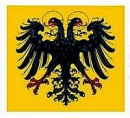

 del.icio.us
del.icio.us
 Digg
Digg![MilliauFly[1].jpg](http://synthesenationale.hautetfort.com/media/01/01/1005960772.jpg)

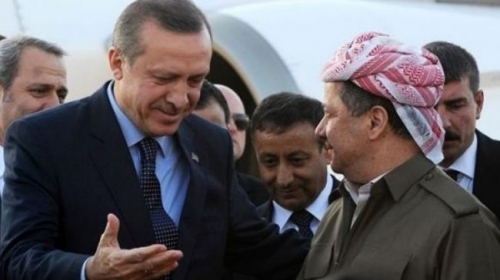
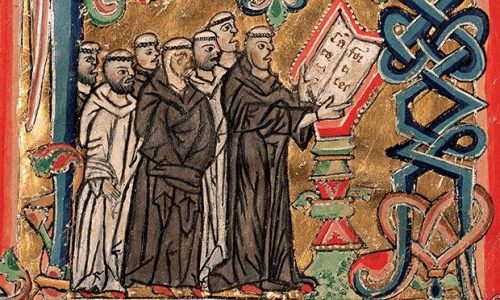
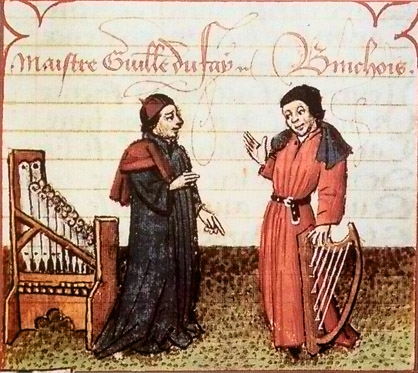 Jean de Vaerwere, dit Johannes Tinctoris, né en 1435 à Nivelles, dans le Brabant wallon, affine en 1477 le règles de l’écriture à plusieurs voix dans un remarquable traité de contrepoint, Liber de arte contrapuncti, suivi de trois autres traités tous publiés en Italie, qui vont servir de référence. Son successeur picard Josquin des Prés, qui mourra à Condé-sur-l’Escault en 1541, passera lui aussi par Milan, la Sixtine romaine et Ferrare. La délocalisation franco-flamande est totale. D’Andrea Gabrieli (Venise) à Palestrina (Rome) en passant par Ingenieri (Crémone) ou Monteverdi (Mantoue), tous les grands maîtres italiens sont formés par des Nordiques.
Jean de Vaerwere, dit Johannes Tinctoris, né en 1435 à Nivelles, dans le Brabant wallon, affine en 1477 le règles de l’écriture à plusieurs voix dans un remarquable traité de contrepoint, Liber de arte contrapuncti, suivi de trois autres traités tous publiés en Italie, qui vont servir de référence. Son successeur picard Josquin des Prés, qui mourra à Condé-sur-l’Escault en 1541, passera lui aussi par Milan, la Sixtine romaine et Ferrare. La délocalisation franco-flamande est totale. D’Andrea Gabrieli (Venise) à Palestrina (Rome) en passant par Ingenieri (Crémone) ou Monteverdi (Mantoue), tous les grands maîtres italiens sont formés par des Nordiques.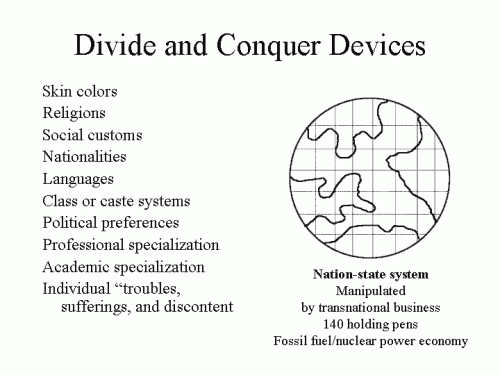

 For many years the US Empire has been employed to do the global elite’s dirty bidding. After using Osama bin Laden’s al Qaeda originally to defeat an overextended Soviet Empire in the world’s empire graveyard
For many years the US Empire has been employed to do the global elite’s dirty bidding. After using Osama bin Laden’s al Qaeda originally to defeat an overextended Soviet Empire in the world’s empire graveyard  The growing list of US victimized nations-turned-war-ravaged
The growing list of US victimized nations-turned-war-ravaged  Another alarming consequence of this NWO agenda that’s never been more glaringly obvious is the out of control
Another alarming consequence of this NWO agenda that’s never been more glaringly obvious is the out of control 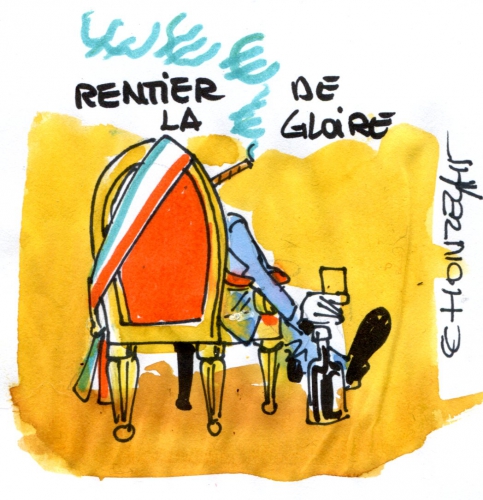
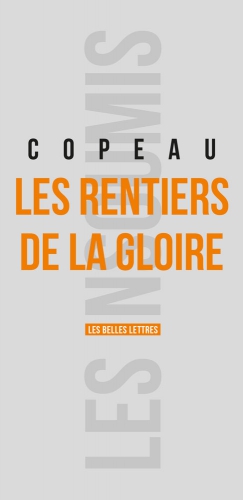 Le titre du dernier livre de la collection des Insoumis, éditée par Les Belles Lettres, fait inévitablement penser, à une lettre près, au titre en français du célèbre film de Stanley Kubrick. Il donne déjà le ton de ce volume, celui d'un pamphlet assumé.
Le titre du dernier livre de la collection des Insoumis, éditée par Les Belles Lettres, fait inévitablement penser, à une lettre près, au titre en français du célèbre film de Stanley Kubrick. Il donne déjà le ton de ce volume, celui d'un pamphlet assumé.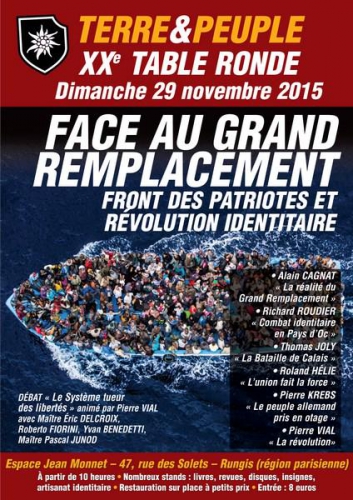

 De controverse zet in Duitsland niet alleen links tegen rechts op, maar snijdt ook doorheen de christendemocratische familie die bestaat uit de CDU van bondskanselier Angela Merkel en haar Beierse zusterpartij CSU van Horst Seehofer.
De controverse zet in Duitsland niet alleen links tegen rechts op, maar snijdt ook doorheen de christendemocratische familie die bestaat uit de CDU van bondskanselier Angela Merkel en haar Beierse zusterpartij CSU van Horst Seehofer. 
